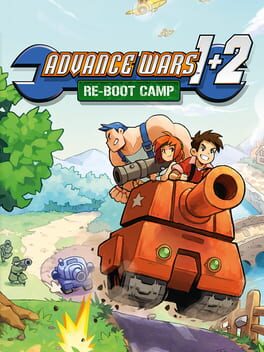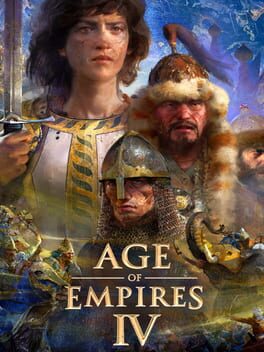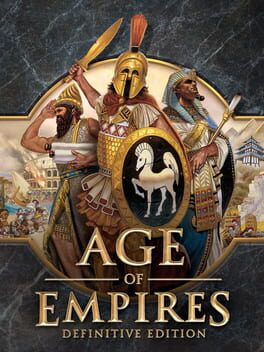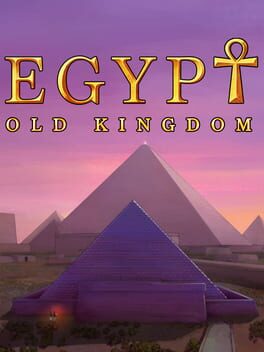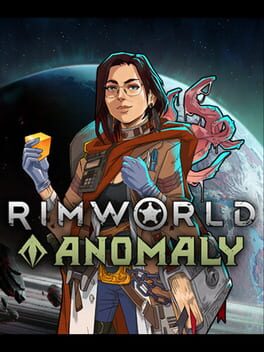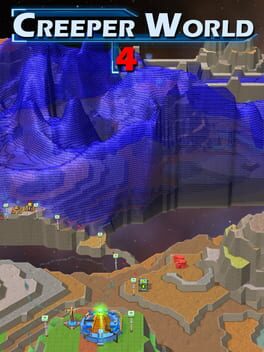valran
2018
This game offers both a masterpiece and, simultaneously, the most mundane experience.
Kingdom: Two Crowns is enigmatic, providing no clues about what you should do or how to do it. However, this ambiguity is one of the game's most attractive features. The slow start allows players to appreciate the stunning background and the beautifully rendered water, arguably the best representation of water I've seen in a game. Watching it becomes a reflective, meditative experience.
Since the game lacks a traditional menu and offers no guidance, you learn its mechanics through trial and error. This approach initially adds a sense of mystery and allure. However, once the gameplay is understood, some of that mystery dissipates. The game then transitions into a more strategy-focused and resource management experience, moving away from its personal and meditative beginnings. This second phase is equally engaging, retaining the game's beauty and mystique. By this point, you’ve developed a dislike for the 'greedlings' and are motivated to combat them.
Admittedly, the game can become repetitive after several hours, but this isn't a significant drawback. The initial hours are breathtaking, making 'Kingdom: Two Crowns' well worth playing.
Kingdom: Two Crowns is enigmatic, providing no clues about what you should do or how to do it. However, this ambiguity is one of the game's most attractive features. The slow start allows players to appreciate the stunning background and the beautifully rendered water, arguably the best representation of water I've seen in a game. Watching it becomes a reflective, meditative experience.
Since the game lacks a traditional menu and offers no guidance, you learn its mechanics through trial and error. This approach initially adds a sense of mystery and allure. However, once the gameplay is understood, some of that mystery dissipates. The game then transitions into a more strategy-focused and resource management experience, moving away from its personal and meditative beginnings. This second phase is equally engaging, retaining the game's beauty and mystique. By this point, you’ve developed a dislike for the 'greedlings' and are motivated to combat them.
Admittedly, the game can become repetitive after several hours, but this isn't a significant drawback. The initial hours are breathtaking, making 'Kingdom: Two Crowns' well worth playing.
Advance Wars 1+2: Re-Boot Camp brings back the successful mechanics of the Game Boy Advance era, but its overall experience feels somewhat outdated. While the graphics have been improved, the gameplay remains unchanged, failing to keep up with industry advancements.
In my opinion, the new cartoonish design doesn't fit well with the wargame theme, and the plot lacks depth, following the clichéd formula of a villain's world conquest. For some reason, the mysterious aura and intriguing lore that the originals had are absent here.
The addictive gameplay and enigmatic qualities of the GBA games held a special allure, hinting at a deeper narrative beyond the game itself. Unfortunately, Re-Boot Camp fails to recapture that essence.
The game offers a nostalgic return to fans seeking a trip down memory lane, but fails to recapture the magic that made the original games so captivating.
In my opinion, the new cartoonish design doesn't fit well with the wargame theme, and the plot lacks depth, following the clichéd formula of a villain's world conquest. For some reason, the mysterious aura and intriguing lore that the originals had are absent here.
The addictive gameplay and enigmatic qualities of the GBA games held a special allure, hinting at a deeper narrative beyond the game itself. Unfortunately, Re-Boot Camp fails to recapture that essence.
The game offers a nostalgic return to fans seeking a trip down memory lane, but fails to recapture the magic that made the original games so captivating.
2021
2019
Do you remember when you were a kid and could play all evening with your friends under the sunny skies?
Do you remember when you could explore far lands like the park two streets away looking for hidden treasure?
Do you remember meeting a new pal, playing some silly games with them, and instantly becoming best friends?
Do you remember when you improvised a new game just from thin air with your friends?
Do you remember being a kid in the summer?
This game is that.
Do you remember when you could explore far lands like the park two streets away looking for hidden treasure?
Do you remember meeting a new pal, playing some silly games with them, and instantly becoming best friends?
Do you remember when you improvised a new game just from thin air with your friends?
Do you remember being a kid in the summer?
This game is that.
What a strange thing we have here—the developers wanted to keep the original experience, but they made some minor (and not-so-minor) changes to the gameplay to make it playable nowadays. The graphics overhaul is neat, and the soundtrack sounds better than ever.
But it didn't work. The stuff they didn't change is too annoying (that pathfinding was criminal in the 90s; now it is atrocious), and what they did change modifies the original experience, so it doesn't feel the same.
Still, the original game was great... for its age. If you, like me, enjoyed AOE when you were a little kid and have strong feelings for it, this remake is a good chance to revisit those memories, and you'll be able to pardon all its defects.
But if you're looking for an RTS game with modern standards, you'd be better off looking elsewhere.
But it didn't work. The stuff they didn't change is too annoying (that pathfinding was criminal in the 90s; now it is atrocious), and what they did change modifies the original experience, so it doesn't feel the same.
Still, the original game was great... for its age. If you, like me, enjoyed AOE when you were a little kid and have strong feelings for it, this remake is a good chance to revisit those memories, and you'll be able to pardon all its defects.
But if you're looking for an RTS game with modern standards, you'd be better off looking elsewhere.
1989
God, am I old now...
This is not, by any means, my first run through the game—I remember playing it on the console itself a few years after its release, and once again on a PC emulator—but after seeing the title available on Nintendo Switch Online, I decided to wear the nostalgia glasses once again and invest an hour into this little, rusty, clunky title.
Let's make it clear that, besides out of curiosity or nostalgia, "Super Mario Land" (SML) should not be played just for fun—you'd be better off playing its sequel, "Super Mario Land 2: 6 Golden Coins," which is superior in almost every aspect. However, if you're curious about how video games were 35 years ago and how the launch titles for the Game Boy looked, SML offers a glimpse into the early days of handheld gaming. It will take about an hour and a few minutes, and you might even have some fun.
Don't get me wrong, SML is not a bad game—it features a decent variety of enemies, worlds, and situations. It was a solid title in its time, used to showcase the raw power of the Game Boy. However, after numerous polished Mario games that followed, this one feels a bit clunky and dated. The controls are not terrible, but by modern standards, they are not okay either. Sometimes, you feel cheated by them, as they tend to throw you off cliffs or onto enemies unexpectedly. Nintendo and the video game industry have significantly improved controls since then.
The game's visuals are simplistic but charming, with a unique aesthetic that sets it apart from its NES counterparts. The music is catchy despite the hardware limitations.
SML is a piece of gaming history and it should be treated like that. For a more enjoyable experience, go play "Super Mario Land 2: 6 Golden Coins".
Favorite songs from this game:
- https://youtu.be/Tj7-st1KOW4?si=RRvFkVpDkpBpKGKu
- https://youtu.be/Ki0LGuZAelw?si=FIQl5hEb0yFLN205
This is not, by any means, my first run through the game—I remember playing it on the console itself a few years after its release, and once again on a PC emulator—but after seeing the title available on Nintendo Switch Online, I decided to wear the nostalgia glasses once again and invest an hour into this little, rusty, clunky title.
Let's make it clear that, besides out of curiosity or nostalgia, "Super Mario Land" (SML) should not be played just for fun—you'd be better off playing its sequel, "Super Mario Land 2: 6 Golden Coins," which is superior in almost every aspect. However, if you're curious about how video games were 35 years ago and how the launch titles for the Game Boy looked, SML offers a glimpse into the early days of handheld gaming. It will take about an hour and a few minutes, and you might even have some fun.
Don't get me wrong, SML is not a bad game—it features a decent variety of enemies, worlds, and situations. It was a solid title in its time, used to showcase the raw power of the Game Boy. However, after numerous polished Mario games that followed, this one feels a bit clunky and dated. The controls are not terrible, but by modern standards, they are not okay either. Sometimes, you feel cheated by them, as they tend to throw you off cliffs or onto enemies unexpectedly. Nintendo and the video game industry have significantly improved controls since then.
The game's visuals are simplistic but charming, with a unique aesthetic that sets it apart from its NES counterparts. The music is catchy despite the hardware limitations.
SML is a piece of gaming history and it should be treated like that. For a more enjoyable experience, go play "Super Mario Land 2: 6 Golden Coins".
Favorite songs from this game:
- https://youtu.be/Tj7-st1KOW4?si=RRvFkVpDkpBpKGKu
- https://youtu.be/Ki0LGuZAelw?si=FIQl5hEb0yFLN205
2018
Egypt: Old Kingdom is a strategy game reminiscent of the Civilization series but with a more straightforward approach. Its simpler gameplay mechanics make it accessible, but once you scratch the surface you'll see that it doesn't have that depth.
While it lacks the complexity of Civilization, this game shines in its educational value. It offers an interesting journey through the most relevant ancient Egypt events, making it a treasure trove for enthusiasts of Egyptology and ancient history. The historical authenticity in portraying the era adds an immersive educational layer.
The unbalanced mechanics can lead to a repetitive and less challenging experience. It's easy to discover how to exploit the game and gather an absurd amount of resources, making the challenges trivial and non-interesting. Also, the user interface can be confusing from time to time, and it's hard to know what the outcome of some of your actions will be.
It's a great pick for those interested in ancient Egypt and those looking for a straightforward strategy, turn-based game. Despite its flaws, the game offers a unique blend of education and entertainment, and I would recommend it for a cheap price.
While it lacks the complexity of Civilization, this game shines in its educational value. It offers an interesting journey through the most relevant ancient Egypt events, making it a treasure trove for enthusiasts of Egyptology and ancient history. The historical authenticity in portraying the era adds an immersive educational layer.
The unbalanced mechanics can lead to a repetitive and less challenging experience. It's easy to discover how to exploit the game and gather an absurd amount of resources, making the challenges trivial and non-interesting. Also, the user interface can be confusing from time to time, and it's hard to know what the outcome of some of your actions will be.
It's a great pick for those interested in ancient Egypt and those looking for a straightforward strategy, turn-based game. Despite its flaws, the game offers a unique blend of education and entertainment, and I would recommend it for a cheap price.
2024
There’s not much more I can say about Anomaly that hasn’t already been said – I understand the people who love this expansion, and I understand the people who found it bland and uninspired – but for me, this has been an excellent experience. I love Rimworld, I always return to it after a break of a few months (or years) to try and extend the life expectancy of a band of space castaways. It still amazes me how the same game can offer so many different experiences. And yet, after almost 900 hours, Rimworld inevitably becomes easy and repetitive, and that's why the past expansions added new challenges and difficulties. It didn’t make sense, however, for this new expansion to follow the path of the previous ones – adding new mechanics, new creatures, new enemies – because that has already been done three times, and even with the depth each one has, it ends up being more of the same. Yes, in this case, more is better, more complex, more interesting... For a while. But more of the same.
And that’s where Anomaly comes in, which is more of a nightmare than an expansion, because it presents you with a small door to a world of extradimensional horrors in the form of a monolith. It’s just there, with a small blinking light, next to your colonists, and it can be ignored without much problem – but how are you going to ignore a terrifying-looking structure with a small blinking light? So you order your smartest guy to go and take a look, and after a couple of rounds inspecting its surface and some taps with his finger, space folds in on itself, the light distorts, and a psychic scream lashes the minds of your poor, innocent colonists. And apparently, nothing else happens, except that a fine gray mist that smells... like death? covers everything.
Little by little, all kinds of creatures start parading through your colony. Some recognizable, like a classic zombie horde, or some wandering ghoul, and others much more original, both in concept and execution.
Some of the new enemies in Anomaly rely on their numbers to ruin your life, while others manage on their own – surprisingly, a horde of 80 zombies incapable of feeling pain or fatigue (common tools in Rimworld defense) is no more dangerous than a single invisible and smart enemy. The zombie horde is a mundane threat because you deal with it with guns and a lot of fire (thanks to the new flamethrowers included in Anomaly), but the invisible (and smart) bastard forces you to rethink your strategy, not only to fight him but also for the normal development of your colony. When he attacks for the first time, you realize he prefers solitary colonists, away from the others, so now you can’t leave anyone alone. But it’s inevitable. You can’t watch everyone all the time. And when he attacks for the fourth time and you see him slowly but surely depleting your colony, something clicks in your head. I have to set up a hunting party, you think. You have no choice but to select your most skilled guys, equip them as best as possible, and send them out beyond the walls, in the middle of the night, on a search and capture mission. But that bastard holds out, hits hard, and runs faster than your fastest guy, so he comes in, hits, and takes off while you empty on him every possible magazine in the few seconds he gives you. But now your hunting party has to deal with a superior enemy and an injured member among their ranks.
I can say that chasing, and finally killing that bastard has been a terrifying, stressful, traumatic, and wonderful experience.
But not all enemies are external threats – the internal enemy is present, and you let it in voluntarily into your colony, only to realize your mistake too late. Just like with the invisible (and smart) bastard, many things in Anomaly force you to change your way of playing, and you have to adapt to an unexpected situation on the fly – forget what you’ve learned about your colonists, about how they work, about how they relate. A piece of peeled skin on the ground indicates that there is something inside your colony, and your colonists, for the first time, lie and deceive you, the player. Now you have to watch each one closely, seeing where they go and what they do.
And then there’s your human curiosity. Anomaly is aware that you want to see the new content, and that’s why it offers you the option to get into trouble head-on or play it safe. But we’re here to play, aren’t we?
And in exchange for dealing with all that crap (and much more) you get new weapons, new tools, new materials, new skills, new rituals, new situations... your colonists can be more powerful than ever by capturing, studying, and torturing (for the sake of science) the creatures that Anomaly includes. Of course, having a handful of extradimensional aberrations within walls isn’t easy, so Anomaly includes some containment mechanics so you can set up your own SCP, and you’ll decide if the potential benefits outweigh the risk of (trying to) keep those aberrations at home.
And besides, now you can do even more immoral things than Rimworld already allowed you to do with your human prisoners. Big words.
Anyway. Anomaly has offered me many situations where I thought "holy cow, this is SO COOL". And that feeling has kept me going, facing the void, and finally coming out victorious. And that’s something that, after almost 900 hours, I don’t think many other titles can say.
And now I’m leaving. It’s been a long time since I saw my cube.
I need to be with my cube.
Where is my cube?
WHERE IS MY CUBE?
-------
Favorite themes of the awesome OST:
https://youtu.be/1l3AymZiV58?si=o247wQHKyYAM53OC
https://youtu.be/DeHERLg1zvY?si=QjhJ_i1yUP077z1r
https://youtu.be/PQfnUuVmks0?si=WV_JUkF5xh2bt11G
https://youtu.be/nwJPy5jrW40?si=CAghMgYRP8xiDaFA
And that’s where Anomaly comes in, which is more of a nightmare than an expansion, because it presents you with a small door to a world of extradimensional horrors in the form of a monolith. It’s just there, with a small blinking light, next to your colonists, and it can be ignored without much problem – but how are you going to ignore a terrifying-looking structure with a small blinking light? So you order your smartest guy to go and take a look, and after a couple of rounds inspecting its surface and some taps with his finger, space folds in on itself, the light distorts, and a psychic scream lashes the minds of your poor, innocent colonists. And apparently, nothing else happens, except that a fine gray mist that smells... like death? covers everything.
Little by little, all kinds of creatures start parading through your colony. Some recognizable, like a classic zombie horde, or some wandering ghoul, and others much more original, both in concept and execution.
Some of the new enemies in Anomaly rely on their numbers to ruin your life, while others manage on their own – surprisingly, a horde of 80 zombies incapable of feeling pain or fatigue (common tools in Rimworld defense) is no more dangerous than a single invisible and smart enemy. The zombie horde is a mundane threat because you deal with it with guns and a lot of fire (thanks to the new flamethrowers included in Anomaly), but the invisible (and smart) bastard forces you to rethink your strategy, not only to fight him but also for the normal development of your colony. When he attacks for the first time, you realize he prefers solitary colonists, away from the others, so now you can’t leave anyone alone. But it’s inevitable. You can’t watch everyone all the time. And when he attacks for the fourth time and you see him slowly but surely depleting your colony, something clicks in your head. I have to set up a hunting party, you think. You have no choice but to select your most skilled guys, equip them as best as possible, and send them out beyond the walls, in the middle of the night, on a search and capture mission. But that bastard holds out, hits hard, and runs faster than your fastest guy, so he comes in, hits, and takes off while you empty on him every possible magazine in the few seconds he gives you. But now your hunting party has to deal with a superior enemy and an injured member among their ranks.
I can say that chasing, and finally killing that bastard has been a terrifying, stressful, traumatic, and wonderful experience.
But not all enemies are external threats – the internal enemy is present, and you let it in voluntarily into your colony, only to realize your mistake too late. Just like with the invisible (and smart) bastard, many things in Anomaly force you to change your way of playing, and you have to adapt to an unexpected situation on the fly – forget what you’ve learned about your colonists, about how they work, about how they relate. A piece of peeled skin on the ground indicates that there is something inside your colony, and your colonists, for the first time, lie and deceive you, the player. Now you have to watch each one closely, seeing where they go and what they do.
And then there’s your human curiosity. Anomaly is aware that you want to see the new content, and that’s why it offers you the option to get into trouble head-on or play it safe. But we’re here to play, aren’t we?
And in exchange for dealing with all that crap (and much more) you get new weapons, new tools, new materials, new skills, new rituals, new situations... your colonists can be more powerful than ever by capturing, studying, and torturing (for the sake of science) the creatures that Anomaly includes. Of course, having a handful of extradimensional aberrations within walls isn’t easy, so Anomaly includes some containment mechanics so you can set up your own SCP, and you’ll decide if the potential benefits outweigh the risk of (trying to) keep those aberrations at home.
And besides, now you can do even more immoral things than Rimworld already allowed you to do with your human prisoners. Big words.
Anyway. Anomaly has offered me many situations where I thought "holy cow, this is SO COOL". And that feeling has kept me going, facing the void, and finally coming out victorious. And that’s something that, after almost 900 hours, I don’t think many other titles can say.
And now I’m leaving. It’s been a long time since I saw my cube.
I need to be with my cube.
Where is my cube?
WHERE IS MY CUBE?
-------
Favorite themes of the awesome OST:
https://youtu.be/1l3AymZiV58?si=o247wQHKyYAM53OC
https://youtu.be/DeHERLg1zvY?si=QjhJ_i1yUP077z1r
https://youtu.be/PQfnUuVmks0?si=WV_JUkF5xh2bt11G
https://youtu.be/nwJPy5jrW40?si=CAghMgYRP8xiDaFA
2020
The game opts for basic, functional graphics over aesthetic beauty. Its story mode is well-balanced in terms of challenge and length, with a satisfying progression and new tools and weapons introduced steadily. This installment successfully combines elements from previous games in the series with new features, including a notable addition of a 3D environment.
One of the main issues that I had with the game is that is easy to trivialize
- I mean, if you are methodical enough, sooner or later victory becomes unavoidable because once you cover the terrain with weapons enough in number and variety, it's impossible for the enemy to penetrate that zone. That renders the game a repetitive experience for some levels. However, the continuous addition of new tools and mechanics makes it interesting enough, although most of them are only needed in the latter levels of the campaign.
Creeper World 4 appeals to both series fans and new players, thanks to its mix of traditional and innovative gameplay aspects.
One of the main issues that I had with the game is that is easy to trivialize
- I mean, if you are methodical enough, sooner or later victory becomes unavoidable because once you cover the terrain with weapons enough in number and variety, it's impossible for the enemy to penetrate that zone. That renders the game a repetitive experience for some levels. However, the continuous addition of new tools and mechanics makes it interesting enough, although most of them are only needed in the latter levels of the campaign.
Creeper World 4 appeals to both series fans and new players, thanks to its mix of traditional and innovative gameplay aspects.


